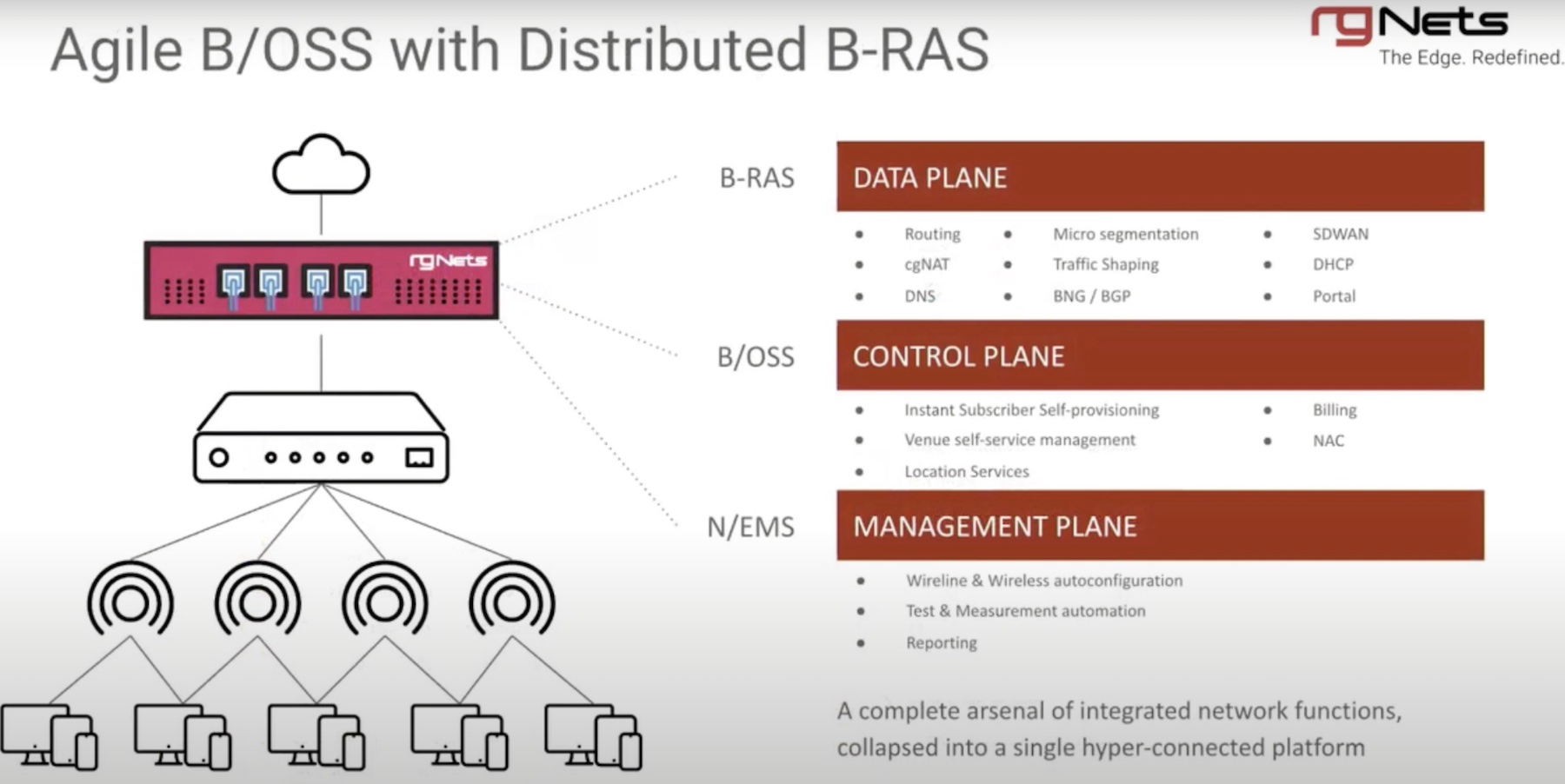Modern networks are stunningly complex. They are vast and highly interconnected, a fabric alive with activity and movement 24/7. How the wiring of such a network comes about is known to very few. Ever fewer knows how to bring the thousands and trillions of connections into a cohesive picture.
One company has been working to solve the network complexity by consolidating the moving parts in the traditional network deployment. For the past 16 years, RG Nets has helped BYOD enterprises provide a robust and reliable network to their guests. With over 8000 installations that include 2 of the world’s busiest airports, 3 telecom giants and hospitality behemoths, it is one of the few companies to have penetrated the edge market before the hype came.
At the recent Networking Field Day event in Silicon Valley, Calif, RG Nets presented rXg, a purpose-built edge network solution for service providers that promises improved operational efficiency at supremely low OpEx.
A Complex Stack
In a traditional network stack, there are “n” number of network services – routers, switches, network controllers, APs, SD-WAN, DNS and DHCP services, RADIUS, and so on. The bigger the network, the more motley the stack.
“You need these things to make a network function right, and depending on the network, sometimes that’s one box, sometimes that’s six. Generally, with more complex or demanding networks, operators need to focus on things like DNS and DHCP like normal network services. And they don’t think about it until suddenly it becomes a complex problem at scale,” said Clint Kennedy, Head of Sales and Solutions Architecture at RG Nets.
MSPs, ISPs, travel and hospitality companies, and education institutes are constantly catering to mobile users. These users bring their own devices that they connect to the network sharing hunches of private data. It is critical to balance between providing an impressive BYOD user experience to these customers while ensuring that private information remains secure.
But making each of the network pieces behave in an orderly fashion to produce desirable network behaviors is a pie in the sky pursuit for many. It is a daunting task. “When you have to have different vendors talk to each other, or even if it’s the same vendor, oftentimes, there might be different business units within that organization and completely different product sets. The right hand doesn’t talk to the left,” he pointed out.
Companies approach this mess with dedicated services, but it is far from ideal. “In a solution that is not using our product, you’ve to have a very purpose-built box for every single network service. That is very difficult to manage and deploy.”
Tightly Integrating Network Services with rXg
To override the complexity, enterprises need a unified multi-services platform that aligns and anchors all the disparate services. This platform will pare down the administrative burden, and reduce operational costs, all the while keeping the network robust and reliable, and the services, easy to deploy. Essentially it would collapse a lot of the network services and piece them together into a single hyper-connected platform.
Ironically, a lot of vendors promise this single-pane-of-glass experience, but seldom deliver. RG Nets’ rXg materializes this vision. “Imagine if your router not only did all the normal routing and gateway services, but also was your subscriber management platform, could also do billing and captive portal, your network access control and all these things at scale,” said Kennedy.
rXg is a multi-service edge gateway that serves as one solution for myriad network services. In a nutshell, here is what it does in Kennedy’s words. “Instead of having twelve different VMs or physical boxes or some combination therein, we actually have one operating system with all these services running underneath it, with a common backend database that’s orchestrated to deliver these network services in a way that makes sense and is easy to scale, roll out, and deploy, not just one time, but hundreds and thousands of times.”

On rXg, the workflows are templatized and therefore, reproducible. This means they can be used as is every time. This orchestration not only reduces operational overheads, but also cuts down the OpEx by a significant measure.
Out of the box, rXg offers network capabilities such as routing, core network services like DHCP and DNS, traffic shaping, billing, onboarding, micro-segmentation, SD-WAN, threat management and location-based services.
The solution provides an agile B/OSS combining the functions of Operations Support Systems (OSS) and Business support Systems (BSS). So processes like order capturing, billing, network inventory management, guest management, and so on can be carried out at low effort and low cost on a single platform.
Another feature that is particularly helpful for service providers is automated subscription. It enables operators to set service activation to autopilot thus ensuring high levels of customer satisfaction at zero operator intervention. The solution supports a wide variety of last mile distribution technologies and offers easy integration without manual configurations.
“One of the advantages is our improved workflow that helps greatly reduce OpEx especially for large scale networks. It provides the ability to reduce the amount of time and effort that goes into initial as well as subsequent deployments,” said Kennedy. “Additionally, overall general subscriber management gives control to the subscribers to make changes to their account as well and the particular plan they might be on.”
rXg has impressive integration capabilities that allow it to work with a variety of existing billing solutions that includes, but are not limited to payment gateways and management systems.
If you’re interested to learn more about rXg, check out RG Net’s presentations from the recent Networking Field Day event. Also try out the free version of rXg on their website.

